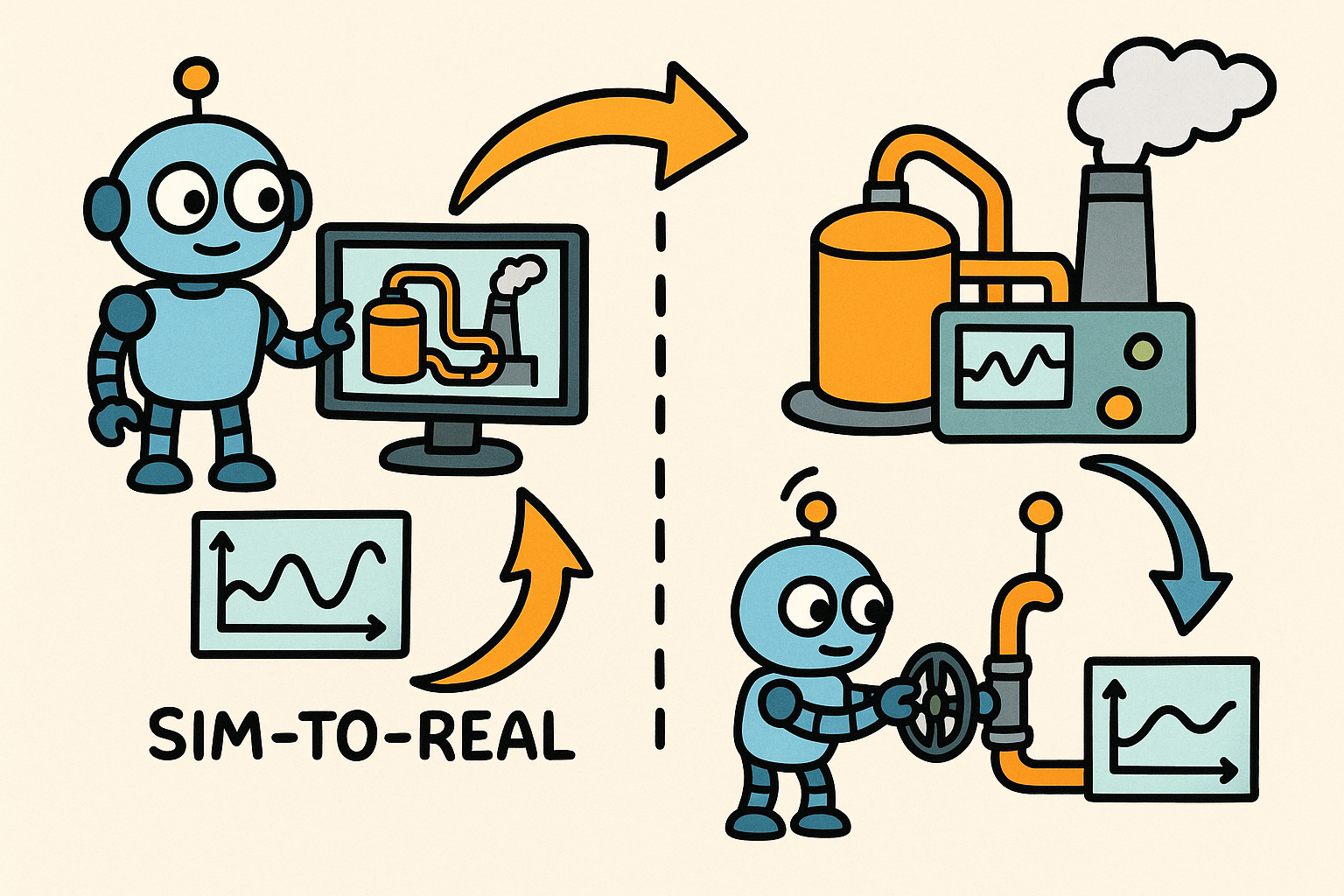Your Cart is Empty
Customer Testimonials
-
"Great customer service. The folks at Novedge were super helpful in navigating a somewhat complicated order including software upgrades and serial numbers in various stages of inactivity. They were friendly and helpful throughout the process.."
Ruben Ruckmark
"Quick & very helpful. We have been using Novedge for years and are very happy with their quick service when we need to make a purchase and excellent support resolving any issues."
Will Woodson
"Scott is the best. He reminds me about subscriptions dates, guides me in the correct direction for updates. He always responds promptly to me. He is literally the reason I continue to work with Novedge and will do so in the future."
Edward Mchugh
"Calvin Lok is “the man”. After my purchase of Sketchup 2021, he called me and provided step-by-step instructions to ease me through difficulties I was having with the setup of my new software."
Mike Borzage
Design Software History: The Evolution and Impact of Cloud-Based Simulation Platforms in Modern Design Workflows
November 14, 2024 7 min read


Introduction
In the rapidly evolving landscape of modern design workflows, cloud-based simulation platforms have emerged as a pivotal component. These platforms have revolutionized the way designers and engineers approach complex problem-solving by providing unparalleled access to computational resources and collaborative tools. The integration of cloud computing with simulation technologies has not only enhanced computational efficiency but also fostered an environment where real-time data processing and collaboration are integral. This convergence has empowered teams to work cohesively across geographical boundaries, streamlining design processes and accelerating innovation. The significance of these platforms lies in their ability to handle vast amounts of data seamlessly, enabling more accurate simulations and leading to better-informed design decisions.
Historically, simulation tools were confined to powerful on-premise systems, limiting accessibility and flexibility. However, the advent of cloud computing has disrupted this paradigm, offering scalable and cost-effective solutions that cater to the dynamic needs of modern industries. The importance of collaboration and real-time data processing in today's design environments cannot be overstated. As projects become increasingly complex, the need for teams to access up-to-date information instantaneously has become critical. Cloud-based platforms facilitate this by providing a centralized hub where data is stored, processed, and accessed in real time. This not only enhances collaboration among team members but also ensures that all stakeholders are aligned throughout the design process. Furthermore, the ability to run simulations in the cloud allows for the rapid testing of multiple scenarios, leading to more robust and optimized designs.
The fusion of cloud technologies with simulation tools represents a significant leap forward in design methodologies. It addresses the challenges posed by traditional systems, such as limited computational resources and siloed workflows. By leveraging the cloud, organizations can tap into virtually unlimited processing power, enabling them to handle more complex simulations than ever before. This democratization of high-performance computing resources has leveled the playing field, allowing smaller firms to compete with larger enterprises. Additionally, cloud-based platforms support multi-user environments, which are essential for fostering innovation through collaborative efforts. In essence, the emergence of cloud-based simulation platforms marks a new era in design, characterized by enhanced efficiency, collaboration, and the ability to make data-driven decisions quickly and effectively.
Historical Context
The journey of simulation software has evolved significantly from its early days of on-premise solutions to the sophisticated cloud-based platforms we see today. Initially, simulation tools were limited to powerful computers housed within organizations, requiring substantial investment in hardware and maintenance. These on-premise solutions were characterized by their limited accessibility, high costs, and scalability issues. The limitations were especially pronounced for small to medium-sized enterprises that couldn't afford the necessary infrastructure. Users often faced challenges such as lengthy simulation times due to hardware constraints and difficulties in collaborating across different locations. Despite these challenges, on-premise solutions laid the groundwork for computational simulation, enabling engineers and designers to validate and optimize their designs in a virtual environment before physical prototyping.
As technology progressed, the need for more flexible and scalable solutions became apparent. The transition to cloud infrastructure was driven by key technological advancements and the evolving needs of the market. The rise of cloud computing in the early 2000s, spearheaded by companies like Amazon with its Amazon Web Services (AWS), revolutionized the way computational resources were accessed and utilized. The cloud offered a solution to the limitations of on-premise systems by providing scalable resources on-demand, reducing the need for heavy upfront investment in hardware. This shift was also propelled by the increasing complexity of design projects, which demanded more computational power and storage than traditional systems could provide efficiently. The cloud infrastructure enabled users to scale their computational capacity according to project demands, paying only for the resources they used, which was a significant cost-saving compared to maintaining in-house servers.
In the realm of design software, companies recognized the potential of integrating cloud computing with simulation technologies. Industry leaders such as Autodesk and ANSYS began developing cloud-based simulation tools to meet the growing demand for more efficient and collaborative design processes. Autodesk introduced platforms like Fusion 360, which combined CAD, CAM, and CAE in a cloud environment, allowing users to collaborate in real time and access powerful simulation tools without the need for high-end local hardware. Similarly, ANSYS developed cloud solutions that provided access to their simulation software suite via the cloud, enabling users to perform complex analyses using high-performance computing resources. These developments marked a significant shift in the industry, as they not only addressed the limitations of on-premise solutions but also opened up new possibilities for innovation and collaboration in design workflows.
Technological Advancements
The advent of cloud computing technologies has been a catalyst for the development of advanced simulation platforms. Technologies such as virtualization, distributed computing, and high-speed internet connectivity have been instrumental in this evolution. Virtualization allows for the creation of virtual instances of computing resources, enabling multiple users to access and utilize powerful hardware simultaneously. Distributed computing leverages a network of computers to perform complex calculations, significantly reducing the time required for simulations. These technologies have made it possible for simulation platforms to provide scalable and accessible services to users worldwide.
The benefits of cloud-based simulations are multifaceted. One of the primary advantages is the ability to scale computational resources dynamically. Users can adjust the processing power and memory allocated to their simulations based on the complexity of their projects. This scalability ensures that even the most demanding simulations can be handled efficiently without the need for investing in expensive local hardware. Additionally, cloud-based platforms enhance accessibility by allowing users to access simulation tools from anywhere with an internet connection. This flexibility supports remote work and collaboration among geographically dispersed teams. Performance enhancements are also a key benefit; cloud platforms often utilize the latest hardware technologies and routinely update their infrastructure, ensuring that users have access to high-performance computing capabilities.
Modern cloud simulation platforms are equipped with key features that address the needs of today's design environments. Real-time collaboration is facilitated through shared workspaces and simultaneous editing capabilities, allowing team members to work together seamlessly. Multi-user capabilities ensure that multiple stakeholders can access and contribute to projects concurrently, which is essential for complex design tasks that require input from various experts. High-performance computing is another critical feature; cloud platforms leverage advanced processors and GPUs to handle intensive simulations, such as fluid dynamics, structural analysis, and thermal modeling. These features collectively enhance the efficiency and effectiveness of the design process, enabling teams to produce higher-quality results in less time.
Some of the key features of modern cloud simulation platforms include:
- On-demand Scalability: Adjust computational resources as needed for different simulation tasks.
- Global Accessibility: Access simulation tools from any location, facilitating remote work.
- Real-time Collaboration: Collaborate with team members in real time, improving communication and efficiency.
- Cost-effectiveness: Reduce overhead by paying only for the resources used, eliminating the need for expensive hardware.
- High-performance Computing: Utilize advanced computing power for complex simulations without local hardware limitations.
Applications and Industry Impact
Cloud-based simulation platforms have found applications across a variety of industries, significantly impacting the fields of engineering, architecture, and manufacturing. In engineering, these platforms enable the analysis and optimization of complex systems, such as the simulation of aerodynamic properties in automotive design or stress analysis in structural components. Architects leverage cloud simulations to model environmental factors like sunlight exposure and wind flow around buildings, leading to more sustainable and efficient designs. In manufacturing, cloud simulations assist in optimizing production processes, reducing waste, and improving product quality. By providing accessibility to powerful simulation tools, cloud platforms have democratized the ability to perform advanced analyses, allowing smaller companies to compete with larger organizations and fostering innovation across industries.
The role of cloud simulation in accelerating product development cycles is substantial. Traditional product development often involves lengthy prototyping phases, with physical models being built and tested iteratively. Cloud-based simulations reduce the need for physical prototypes by allowing for extensive testing and validation in a virtual environment. This not only shortens development times but also reduces costs associated with materials and labor. The ability to quickly simulate and iteratively improve designs in the cloud leads to a more efficient development process, enabling companies to bring products to market faster. Furthermore, real-time collaboration features facilitate better communication among team members, ensuring that design changes are seamlessly integrated and that all stakeholders are informed throughout the development cycle.
Future trends in design through cloud simulation are poised to further transform the industry, particularly with the integration of Artificial Intelligence (AI) and Machine Learning (ML). AI and ML algorithms can analyze vast amounts of simulation data to identify patterns and optimize design parameters automatically. This integration allows for intelligent simulations that can predict outcomes and suggest improvements without explicit human direction. The combination of cloud computing and AI/ML technologies will enable more advanced simulations, such as real-time optimization and adaptive modeling, where designs can adjust parameters in response to simulation feedback autonomously. These advancements will open new possibilities in design, making processes more efficient and innovations more profound.
Future trends in cloud-based simulation include:
- Integration with AI and ML: Leveraging intelligent algorithms for predictive simulations and automated optimization.
- Real-time Data Analytics: Utilizing live data streams to enhance simulation accuracy and responsiveness.
- Enhanced Virtual Collaboration: Immersive technologies like VR and AR for more interactive design experiences.
- Internet of Things (IoT) Connectivity: Integrating simulation platforms with IoT devices for real-world data integration.
Conclusion
The transformative impact of cloud-based simulation platforms on design processes is undeniable. These platforms have revolutionized the way designers and engineers approach problem-solving by providing scalable resources, fostering collaboration, and enhancing computational capabilities. By transitioning from traditional on-premise solutions to cloud-based environments, the design industry has unlocked new levels of efficiency and innovation. The ability to perform complex simulations without the limitations of local hardware has democratized access to advanced tools, empowering organizations of all sizes to compete and innovate. The convergence of cloud computing with simulation technologies has streamlined workflows, reduced development cycles, and led to more robust and optimized designs.
Reflecting on the ongoing evolution of technology, it is clear that these advancements play a critical role in shaping the future of design software. As technologies continue to evolve, the integration of new tools and methodologies will further enhance the capabilities of designers and engineers. The incorporation of AI and machine learning into cloud-based simulations points toward a future where designs can adapt and optimize themselves based on data-driven insights. The continuous development of these technologies will inevitably lead to more intelligent, efficient, and sustainable design practices. This evolution underscores the importance of embracing technological advancements to remain competitive and effective in the industry.
In an ever-changing technological landscape, staying adaptable is paramount. The rapid pace of innovation requires organizations and professionals to be proactive in adopting new technologies and methodologies. Embracing cloud-based simulation platforms is a step toward future-proofing design processes, ensuring that teams have the tools necessary to tackle increasingly complex challenges. The ability to adapt not only facilitates current success but also positions organizations to leverage future technological advancements. Ultimately, the commitment to adaptability and continuous learning will be the driving force behind sustained innovation and success in the design industry.
Also in Design News

Design Software History: Visualizing Engineering Intent: Feature Histories, Constraints, and Semantic PMI in CAD
December 29, 2025 16 min read
Read More
Sim-to-Real Transfer for Closed-Loop Process Calibration and Control
December 29, 2025 12 min read
Read MoreSubscribe
Sign up to get the latest on sales, new releases and more …



